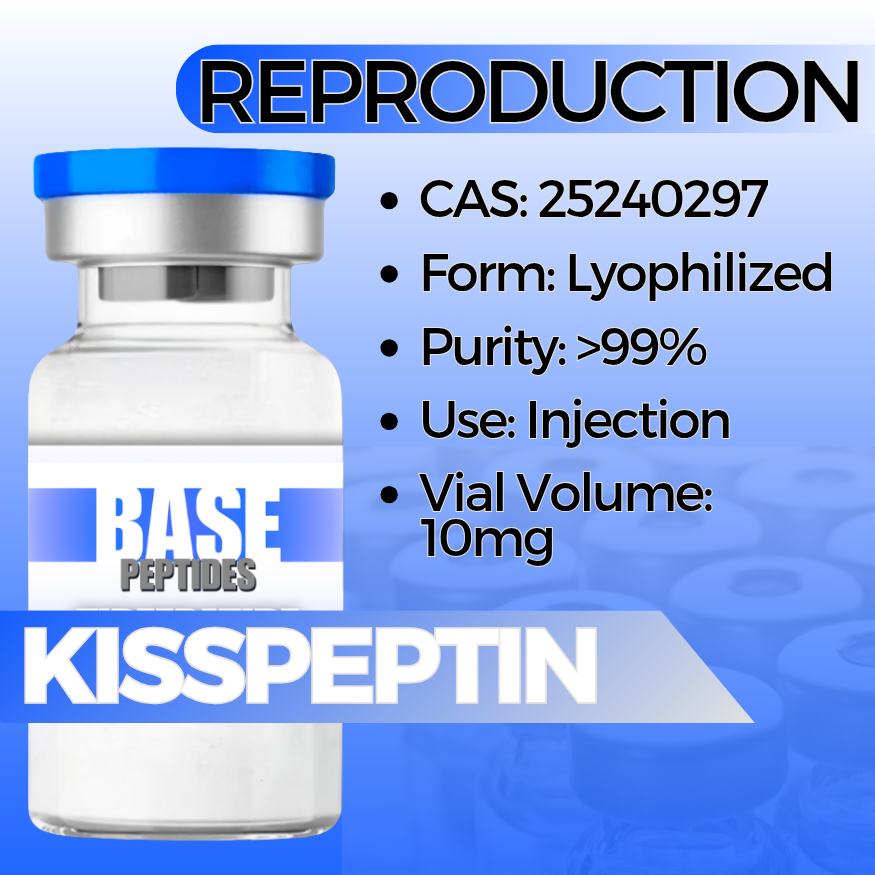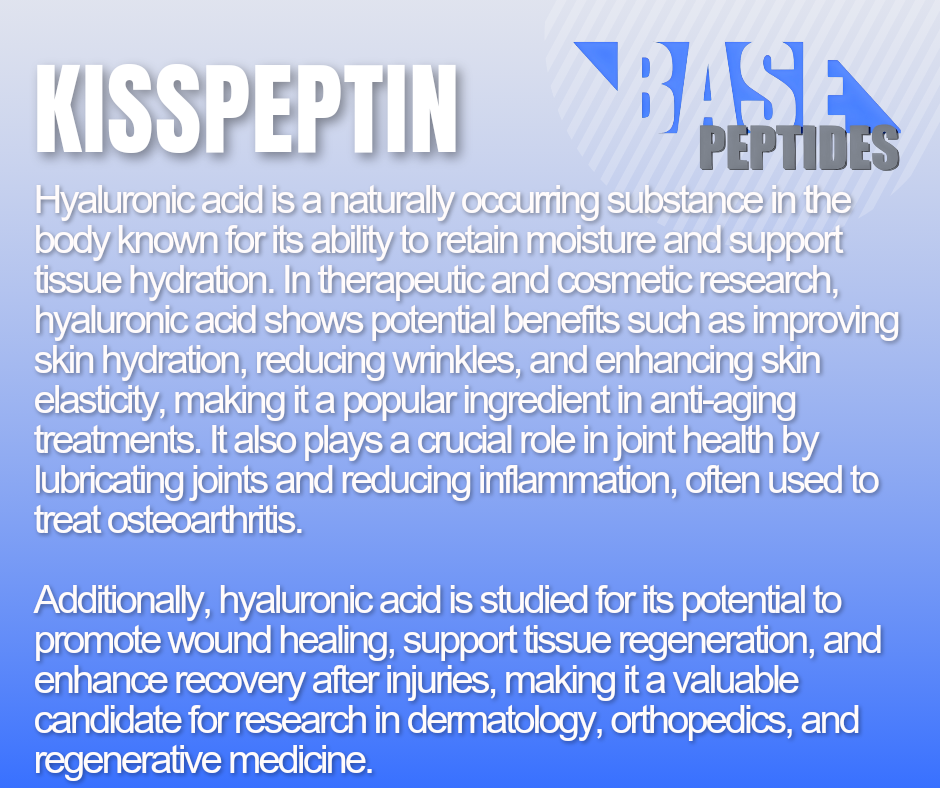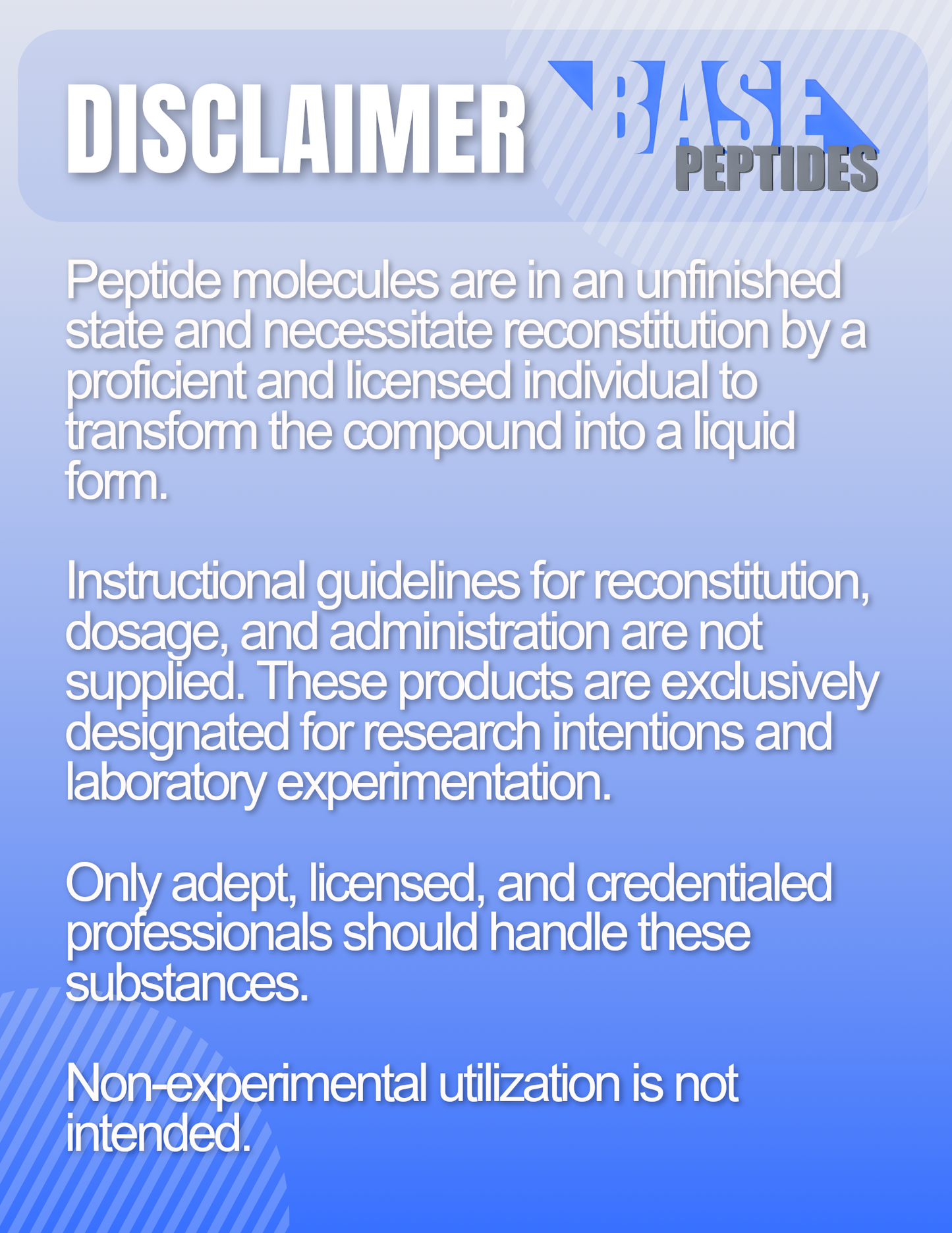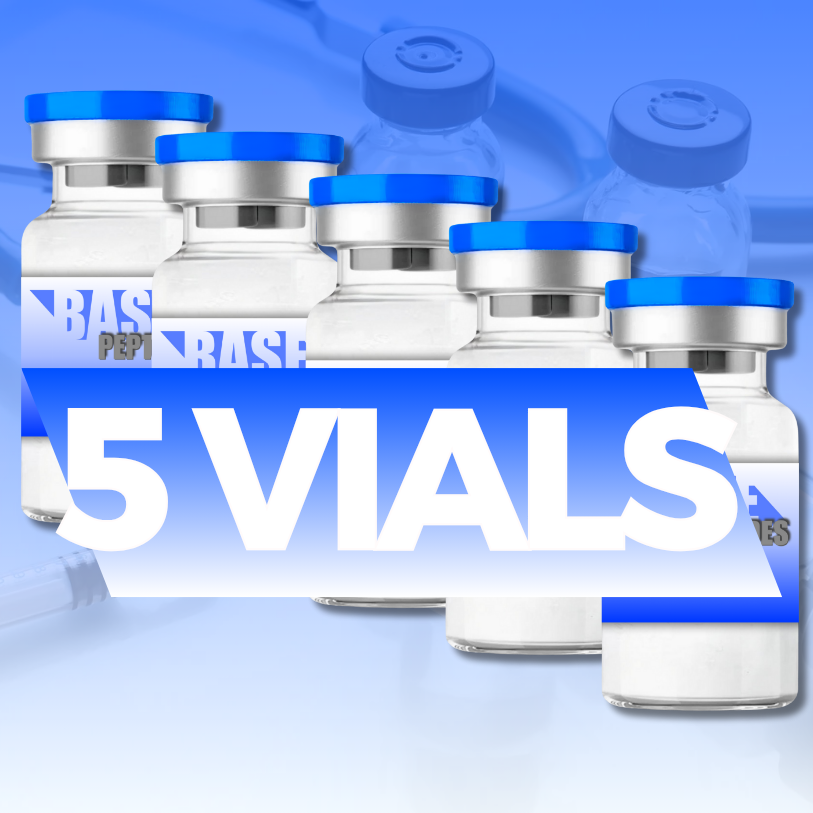Kisspeptin
Kisspeptin
Base Peptides are intended for licensed medical professionals and experienced researchers. Reconstitution required. Dosing and use instructions are not provided.
Couldn't load pickup availability
Kisspeptin — KISS1/Kp-10 Peptide (GPR54/KISS1R Agonist)
Kisspeptin peptides (from the KISS1 gene; historically “metastin”) activate the KISS1R/GPR54 receptor in the hypothalamus to drive GnRH release and downstream LH/FSH signaling. Researchers use kisspeptin to map the reproductive axis, pubertal timing, and hypothalamic pulse-generation.
- Common research forms: Kisspeptin-10 (Kp-10), Kisspeptin-13, Kisspeptin-54
- Receptor: KISS1R (GPR54), a GPCR on GnRH neurons
- Sequence (Kp-10): Tyr-Asn-Trp-Asn-Ser-Phe-Gly-Leu-Arg-Phe-NH2 (YNWNSFGLRF-NH2)
- Class: Neuropeptide; hypothalamic–pituitary–gonadal (HPG) axis modulator
- CAS: Variant-dependent (differs for Kp-10 / Kp-13 / Kp-54)
- Kisspeptin binds KISS1R on GnRH neurons → triggers GnRH secretion → pituitary release of LH/FSH.
- Interacts with the hypothalamic KNDy neuron network (Kisspeptin/Neurokinin-B/Dynorphin) that helps pace the GnRH “pulse generator.”
- Estradiol/testosterone feedback modulates kisspeptin tone, letting researchers probe sex-steroid feedback loops.
- Reproductive axis mapping: Characterize GnRH/LH/FSH dynamics and pulse frequency.
- Puberty & hypothalamic function: Explore timing of pubertal onset and hypothalamic responsiveness.
- Comparative models: Evaluate differences in PCOS, hypothalamic amenorrhea, or hypogonadotropic contexts (preclinical/clinical research models).
Key Study Themes — What Was Tested, What Changed, Why It Matters
Acute LH/FSH Responses
- What was tested: Single or short-pulse kisspeptin exposure; serial sampling of LH/FSH ± sex-steroid suppression.
- What changed: Prompt, dose-dependent rises in LH (often >FSH) when the axis is receptive.
- Why it matters: Confirms intact GnRH–pituitary signaling and informs pulse-timing paradigms.
Pulse Generator / KNDy Network
- What was tested: Pulsatile vs continuous designs; co-manipulation with neurokinin-B or dynorphin analogs.
- What changed: Pulsatile exposure supports physiologic-like LH pulses; continuous exposure may blunt responses (tachyphylaxis).
- Why it matters: Helps distinguish pattern-dependent signaling across the HPG axis.
Translational Endpoints
- What was tested: Axis responsiveness in varied cohorts (e.g., stress, energy deficiency models).
- What changed: Context-dependent LH/FSH and steroid panels; informs hypothalamic sensitivity and feedback strength.
- Why it matters: Useful for parsing hypothalamic drive vs pituitary/ovarian/testicular responsiveness in research settings.
Potential Research Applications
HPG Axis Physiology
- GnRH/LH/FSH dynamics, steroid feedback, pulse-frequency mapping.
Puberty & Timing
- Hypothalamic activation thresholds, sex-steroid priming, developmental studies.
Comparative Endocrinology
- KNDy neuron interactions; neurokinin-B/dynorphin modulation.
Synergistic / Comparator Agents
Gonadorelin (GnRH)
- Why compare: Downstream hypothalamic output vs upstream kisspeptin trigger.
Neurokinin-B (NKB) / Dynorphin A
- Why pair: Dissect the KNDy triad controlling pulse generation and feedback.
Kisspeptin-54 vs Kp-10
- Why compare: Half-life, distribution, and receptor engagement differences across lengths/analogs.
Known Concerns (Context)
- Tachyphylaxis risk: Continuous/very frequent exposure can blunt LH responses; patterning matters.
- Axis sensitivity: Responses vary with sex-steroid milieu (e.g., estradiol/testosterone), energy availability, and stress.
- General: For laboratory research use only; not for human consumption or therapeutic/veterinary use.
Specifications & Handling
- Form: Lyophilized peptide powder (lot-coded)
- Purity: ≥ 98–99% (HPLC/MS)
- Storage: ≤ −20 °C (dry, dark). After reconstitution, refrigerate as protocol dictates.
- Reconstitution: Prepare fresh; document solvent/vehicle, concentration, and time-to-assay; avoid repeated freeze–thaw.
- Labeling: Tamper-evident; “Research Use Only”; variant (Kp-10/Kp-54), lot/SKU and expiration clearly displayed.
Regulatory & Use Notice
Sold for laboratory research use only. Not for human consumption, medical, or veterinary use. No human-use instructions are provided. Buyer is responsible for safe handling and regulatory compliance.
Kisspeptin (Kp-10 / Kp-54) Research Peptide | KISS1R (GPR54) Agonist | GnRH, LH/FSH & HPG Axis Studies








